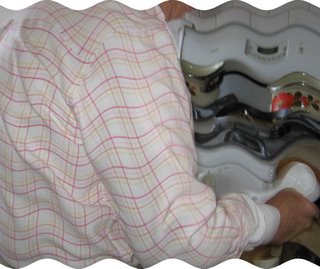 Before Mass this morning, I made the fourteen Stations of the Cross around the Church. Two stations seemed particularly appropriate--the tenth where Jesus is stripped of his garments, and the eleventh where Jesus is nailed to the cross.
Before Mass this morning, I made the fourteen Stations of the Cross around the Church. Two stations seemed particularly appropriate--the tenth where Jesus is stripped of his garments, and the eleventh where Jesus is nailed to the cross.The two stations made me think that many of our country's citizens may be stripped of most material possessions in the next few years. Many may be painfully nailed to a cross of financial difficulties as jobs, homes, and savings are lost.
Zimbabwe provides nightmares of how bad things can get when a government keeps printing more money. Current stories found in THE ZIMBABWE SITUATION abound about the effects of Zimbabwe's extra-super-dooper-hyperinflation:

- All of the country's main public hospitals have closed and those that operate have little or no medicine and suffer a shortage of staff, whose monthly salaries do not cover even one day's bus fare to get to work.
- Zimbabwe riot police on Wednesday broke up a peaceful march by health workers protesting against the collapse of the health infrastructure amid mounting signs that the situation is slipping out of the government’s control.
- Doctors in Zimbabwe said as many as 1,000 people have died in the cholera epidemic caused by the breakdown of the country's water purification system.
- Army discipline is breaking down and on Monday soldiers looted shops in the capital Harare and beat foreign currency dealers.
- Authorities have turned off water taps in Harare because they ran out of purifying chemicals, so people are now digging shallow wells in open ground.
- Zimbabwe police beat union members as they demonstrated against tight restrictions on cash withdrawals.
- The Reserve Bank of Zimbabwe said it would now circulate new Z$10-million, Z$50-million and Z$100-million notes. The previously highest denomination was Z$1-million.
- Unemployment is more than 80 percent.
- Millions survive on nothing but what they are gathering in the wild. McDonald Lewanika of the Crisis in Zimbabwe Coalition reports [in Wedza, a town only 60 miles from the capital, Harare] "You see people fighting with each other and even with wild animals like wart hogs just to take some food back to their children."
- President Robert Mugabe's decided in June to suspend humanitarian aid during his one-man presidential runoff. His suspension of foreign aid remains in force.
- Former President Carter, former United Nations Secretary-General Kofi Annan and Graca Machel, wife of former South African President Nelson Mandela, tried to visit Zimbabwe a week and a half ago to report on the humanitarian situation. But they were denied visas by Mugabe's regime.










